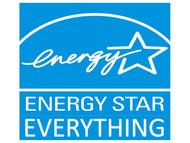All-Electric Everything
"A trillion here, a trillion there and soon you're talking about real money."
Originally published here.
The Administration’s All-Electric Everything goal would require the addition of approximately 4,800 GW of storage supported rating plate capacity renewable generation with a capacity factor of approximately 30%, depending on the ultimate proportion of wind and solar generating capacity. The EIA Annual Energy Review projects that solar would provide approximately twice the electricity provided by wind generation. For purposes of this analysis, we will assume 3,200 GW of additional solar generation and 1,600 GW of new wind generation.
The installed cost of premium solar photovoltaic collectors is approximately $1.06 per Watt. Therefore, the estimated installed cost of 3,200 GW of premium solar collectors would be $3.4 trillion. ($1.06/W * 1,000,000,000 W/GW * 3,200 GW).
The installed cost of utility-scale wind turbines is approximately $1,500,000 per MW. Therefore, the estimated installed cost of 1,600 GW of wind generation would be $2.4trillion. ($1,500,000/MW * 1,000 MW/GW * 1,600 GW)
Therefore, the estimated total installed cost of the additional 4,800 GW of renewable generating capacity would be approximately $5.8 trillion, or approximately $220 billion per year through 2050. These costs do not include the cost of the land required for installation, the cost of tripling the capacity of the existing utility grid, or the cost of connecting the generation systems to the grid.
This additional intermittent renewable generation would require storage support to ensure grid reliability. The additional generation would produce approximately 12,600 TWH per year (4,800 GW * 0.30 CF * 8760 hrs/yr). The storage required for support of this intermittent renewable generating capacity would be approximately 3,200 TWH. (12,600 TWH * 0.25)
The installed cost of the storage capacity, restricted to a maximum charge of 80% to extend battery life, would be approximately $414 trillion, [(3,200 TWH * 1,000,000 MWH/TWH) * 25 * $8,128,870) /15.7 MWH] or approximately $16 trillion per year through 2050.
There are expected to be lower cost storage options, some with longer storage duration, in the future. NREL estimates current 4-hour battery costs at $500 per kWh, which is projected to drop to approximately $250 per kWh by 2050. The Tesla Megapack stores 19,600 kWh at an installed cost of approximately $415 per kWh. Form Energy claims that their iron-air battery could be sold for 10% of the price of a lithium battery such as the Tesla Megapack, though their battery is not yet available commercially. However, even if this or other lower cost, longer duration batteries became commercial immediately, they would reduce the projected incremental cost of storage for the all-electric transition from $414 trillion to $41 trillion.
The installed cost of the storage required to support intermittent renewable generation is currently approximately 70 times the cost of the generation, though different storage technology could potentially reduce the cost of storage to 7 times the cost of the generation. Regardless, storage is clearly the most expensive aspect of a renewable plus storage generation system. This cost has been ignored or trivialized for far too long.



On the surface of it it looks like solar isn't a real energy alternative: the EROEI is too low.
Some say the world will end in fire,
Some say in ice.
From what I’ve tasted of desire
I hold with those who favor fire.
But if it had to perish twice,
I think I know enough of hate
To say that for destruction ice
Is also great
And would suffice.
Robert Frost 1923